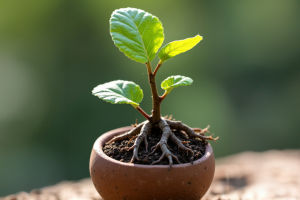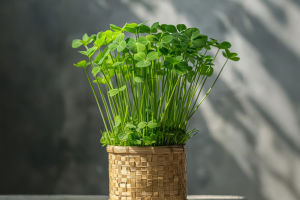I used to keep the same artificial plant on my dining table for three years.
It never wilted.
It never needed care.
And it made my home feel… frozen.
Then one spring morning, a neighbor handed me a small bunch of forsythia from her yard—bright yellow branches in a mason jar.
I placed it on the table.
Suddenly, the room felt alive.
That simple gesture taught me something:
Seasonal flowers don't just decorate a space—they mark time.
They say, It's spring. It's cold outside. It's time to bloom.
And when we invite that rhythm indoors, our homes stop feeling static.
They start breathing with the year.
You don't need a garden.
You don't need floral design skills.
Just a small habit:
Change what's in your vase with the seasons.
Here's how to do it—simply, beautifully, and in tune with nature.
Spring: Light, Bright, and Just Awakening
Spring isn't about full bloom.
It's about promise.
Choose flowers and branches that whisper new life:
• Forsythia – bright yellow twigs, often one of the first signs of spring
• Cherry or apple branches – bare with pink-tipped buds that open slowly in water
• Daffodils – cheerful, simple, best in low, wide vases
• Tulips – lean slightly as they grow; place them where you can watch them stretch
Style tip:
Use clear glass or soft-colored ceramics.
Keep arrangements low so you can see across the table.
Let them be imperfect—buds closed, stems uneven.
That's the point.
Dr. Miriam Cole, an environmental psychologist, says: "Spring flowers reduce mental fatigue by signaling hope and renewal. Even seeing green buds on a branch can lower stress by 15%."
Place one on your kitchen island or entryway table.
Watch it change day by day.
Summer: Full, Lush, and Unapologetically Alive
Summer is abundance.
Don't hold back.
Pick bold, long-lasting blooms:
• Sunflowers – tall, warm, full of joy
• Zinnias – colorful, easy to find at farmers' markets
• Hydrangeas – big, soft clusters that fill space beautifully
• Lavender – fragrant, calming, dries well if you leave it out
Pro tip:
Cut stems at an angle and change water every 2–3 days.
Summer heat makes flowers wilt faster—refreshing the water keeps them going 4–7 days longer.
I use a tall blue pitcher for summer arrangements.
The color cools the look, and the height matches the energy of the season.
Place it where sunlight hits—on a windowsill or near a patio door.
Let the warmth enhance the bloom.
Fall: Warm Tones and Gentle Fade
Fall isn't about brightness.
It's about depth—rich reds, burnt oranges, soft browns.
Use a mix of fresh and dried:
• Mums – sturdy, long-lasting, come in deep rust and burgundy tones
• Sedum (like ‘Autumn Joy') – thick stems with flower heads that turn from green to red to brown
• Grasses – add movement and texture
• Dried wheat or bunny tails – pair with fresh flowers for contrast
Try this:
Let some flowers dry out on purpose.
Leave a vase on the side table and don't water it.
Watch how the colors deepen and the shapes change.
It's a quiet lesson in letting go.
One client told me she started placing a small fall arrangement near her reading chair.
"It made the season feel real," she said.
"Like I wasn't just scrolling through photos of leaves—I was living in them."
Winter: Simple, Quiet, and Light-Filled
Winter flowers aren't loud.
They're subtle—often white, soft pink, or bare branches that hold snow or light.
Best choices:
• Paperwhites – fragrant, white, grow easily in water and pebbles
• Amaryllis – bold red or white blooms that rise dramatically from a single bulb
• Bare birch branches – place in a tall vase, add fairy lights
• Eucalyptus – silvery leaves that smell fresh and last for weeks
Style idea:
Use reflective surfaces—mirrored trays, silver vases, candles nearby.
Winter light is scarce.
Let your arrangement catch and multiply what's there.
A study from the University of Copenhagen found that indoor greenery and soft floral tones during winter months improved mood and focus in 68% of participants—especially in regions with long, dark winters.
Make It a Ritual, Not a Chore
You don't need weekly bouquets.
Just one small seasonal change every 3 months.
Try this:
• Visit a farmers' market or grocery floral section once per season
• Pick one item—just one—that feels like the time of year
• Place it where you see it daily: kitchen, entry, dining table
No arranging skills needed.
Even a single stem in a glass can mark the season.
And over time, you'll notice something:
You start paying attention to the world outside.
You notice when the trees bud.
When the air changes.
When the light shifts.
Because your home is no longer just a shelter.
It's a calendar written in petals and stems.
So this season, ask yourself:
What does nature want to show you right now?
Not perfection.
Not luxury.
Just truth.
Bring a little of it inside.
Let your home change with the year.
Let it remind you:
You're not separate from nature.
You're living in it—every single day.


